
According to Google directions we were supposed to leave El Paujil, drive north to Cimitarra and have only a few more hours until we reached Villa de Leyva. Ho, ho, ho. There is no road north of El Paujil: so all the way back to the main highway in order to backtrack to the ONLY road to Cimitarra. From there to Landázuri, where we gave up driving for the day and found a lovely hotel for $13/night. We may have been their only guests; certainly the only gringos in town.
Wandered around taking in the sights before asking a friendly policeman where to find a good dinner. He pointed us towards a respectable looking establishment. It was a charming, family owned place with the worst food we’d had in Colombia. We asked for chicken, but he said they didn’t have chicken would we like the beef? It was so tough; he had to cut it for us. Shoe leather might have been easier to chew. Ah, well, the flavor was good and the potatoes and rice were edible. As we were leaving, I noticed the fellow at the next table was eating chicken.
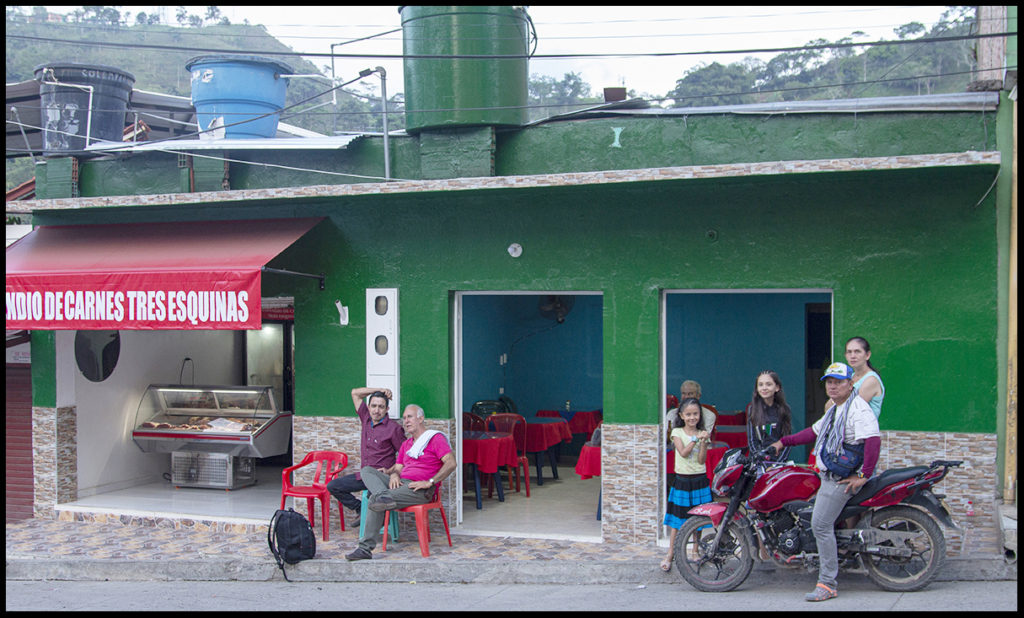
The restaurant with family and friends outside. Craig awaits the food while nursing a warm beer.

Landázuri building style and materials, found in almost all villages.
Strolling back to our hotel we noticed a barber shop: one chair in a very small room. Craig had been thinking of shedding the Grizzly Adams look, so we went in. While he was losing the facial fur, I entertained the three people outside with my abysmal Spanish. Carlos lives next door and invited us to come for breakfast the next morning. This is the best reason for DIY travel…meeting the locals.
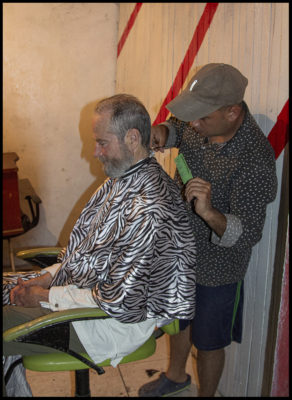
Barber at work.

My forgiving audience.
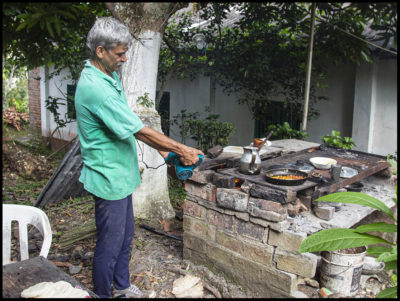
Carlos cooking breakfast on his outdoor fogon.
After our delicious breakfast of arepas (the ubiquitous corn cakes) with queso campasino (farmer’s cheese), scrambled eggs with sausage, and his very own hot chocolate, he gave us a tour of his chocolate growing farm.
Cocoa growing (NOT coca) is a thriving business in the mountains of Colombia. Carlos has an enterprise growing, processing and selling his chocolate. He has ten different species of cocoa pods growing on his several acres. He told us the more bitter species bring the higher prices. He ferments the pods for six days in heat, turning occasionally, then sun dries them before bagging and selling. He also grows star fruit, mandarin oranges, and huge jack fruits.

One of ten species of cocoa.

Pitching the bad ones.
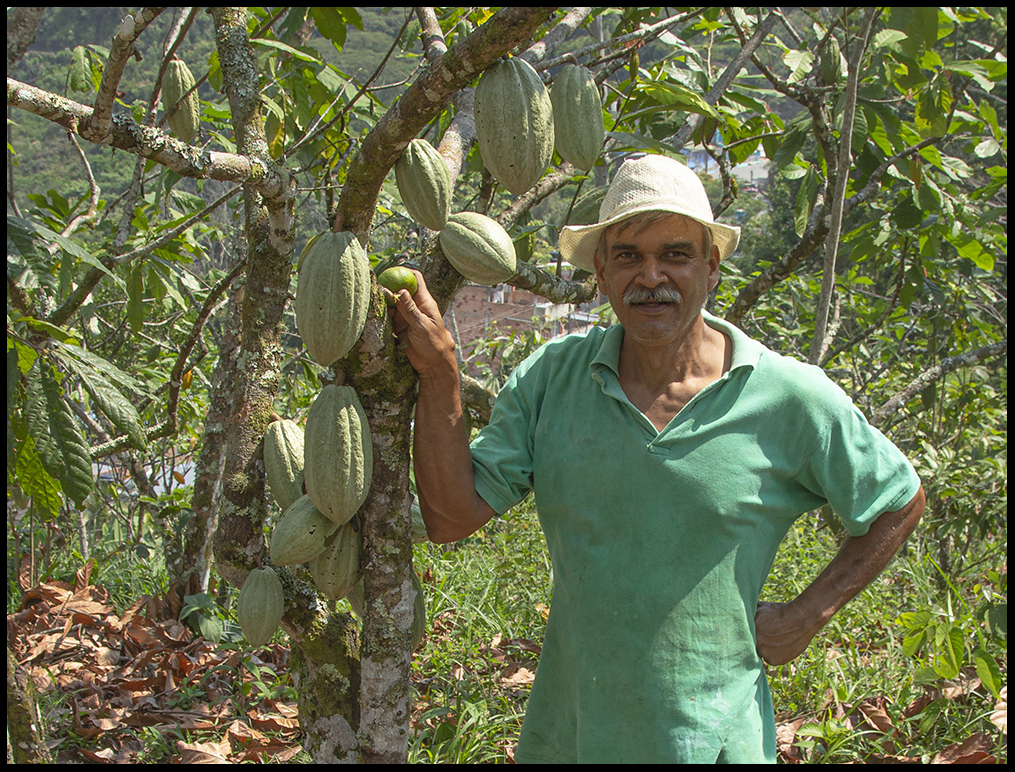
Carlos, the chocolate baron.
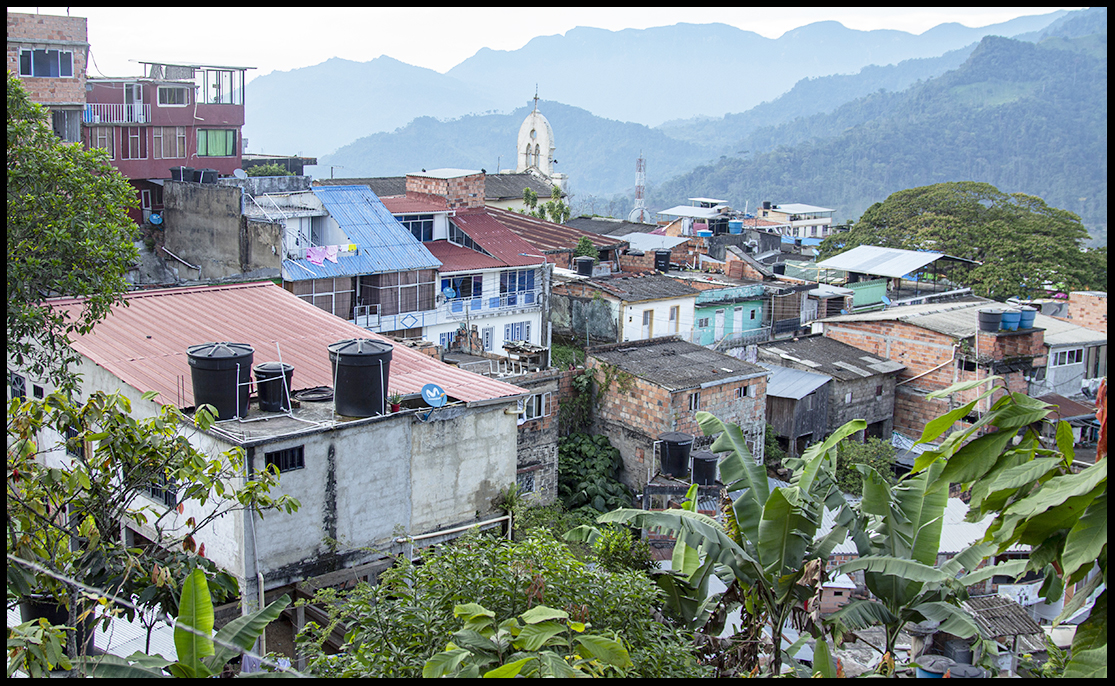
View of Landázuri from Carlos’s orchard.
Moving on after breakfast, we drove through the Andes with their steep, picturesque green valleys. This is good dairy country with lots of contented cows. Many Germans moved into these valleys after the war. It’s a very tidy and prosperous area of Colombia.
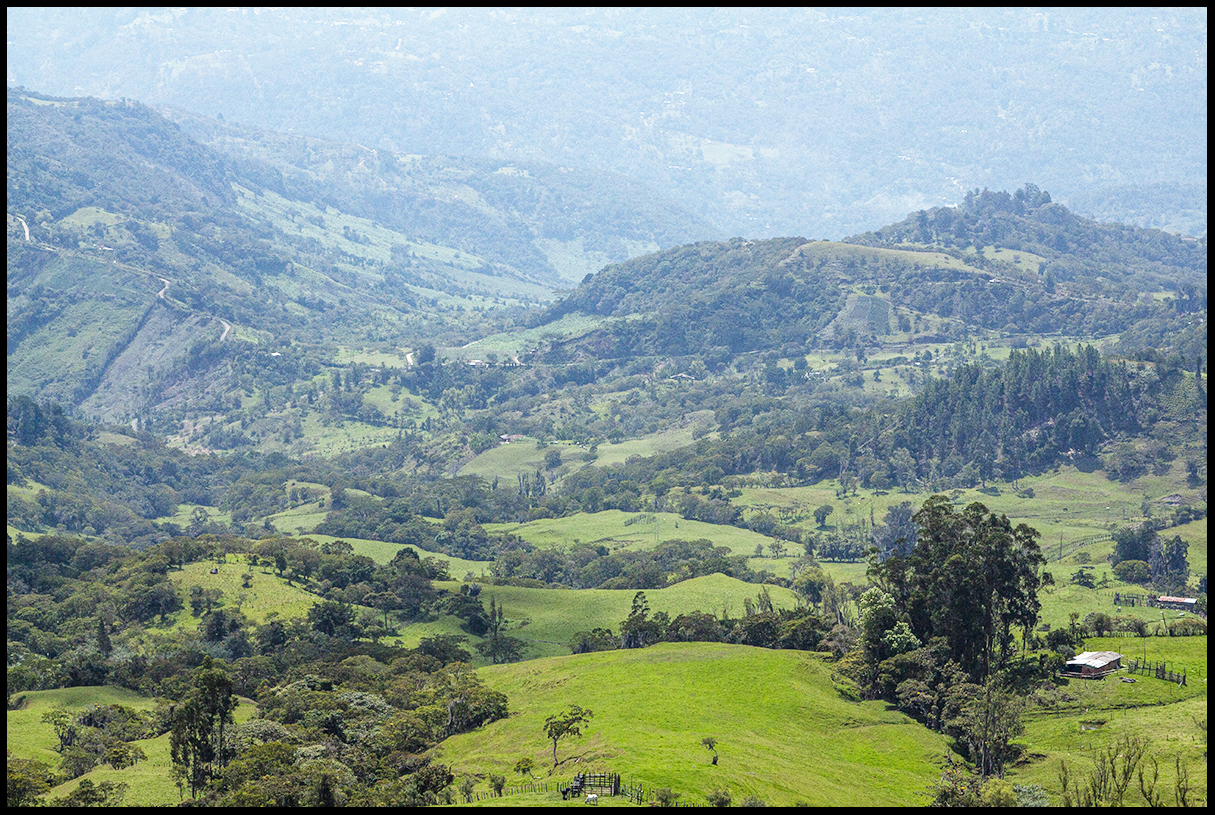
Green valleys of the Andes.
Before arriving at Villa de Leyva, we spotted a small sign announcing “Glamping at La Victoria”. Curiosity turned the steering wheel and several miles later we found ourselves at a peaceful property with 3 luxurious tents, each with their own deluxe baths.
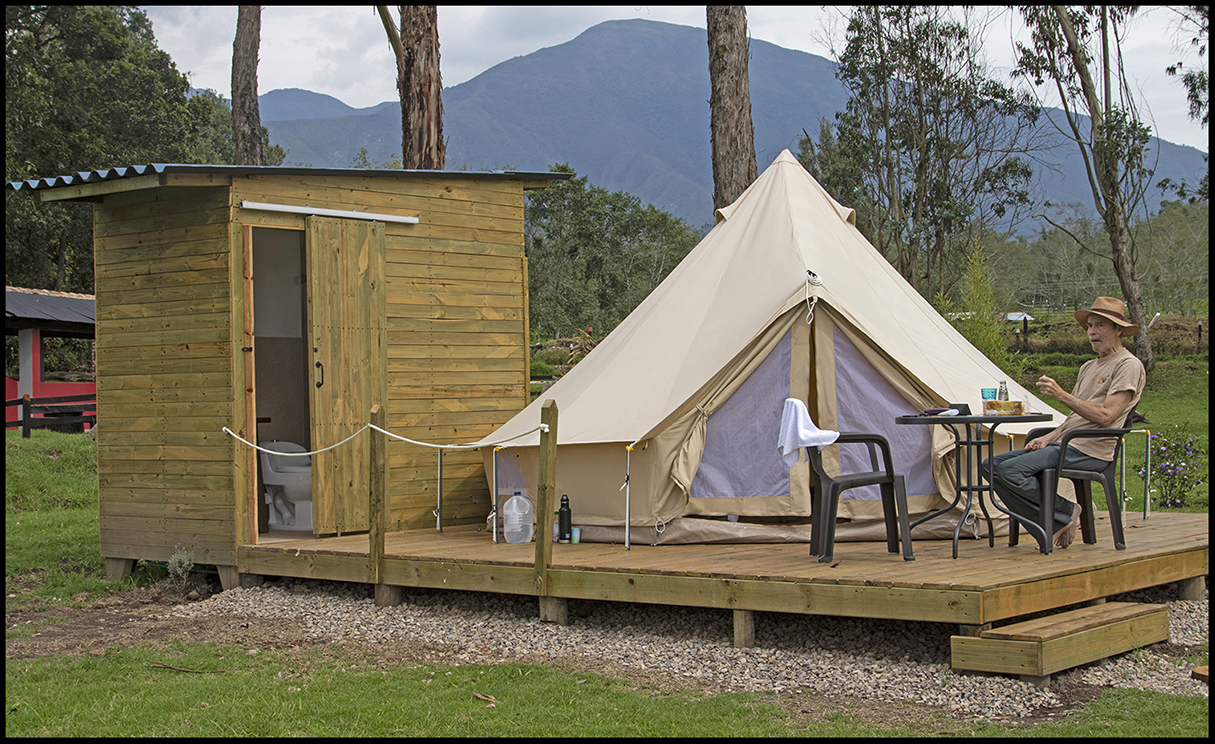
Deluxe tents with elegant baths attached.
Caterina and her absentee brothers keep the family farm going and have added “glamping” (glamorous camping) to the farm’s income stream. She had opened her new project on Sunday. We arrived Wednesday. Unannounced…as usual. She coped well with her first guests. For breakfast the next morning she treated us to milk for our freshly ground coffee straight from her cows, fresh fruit, toast, jam and cereal. They have great plans to add a restaurant, perhaps a camp kitchen and a few other amenities. A restaurant will be welcome as it’s a long drive to the village. Some views of the farm follow.
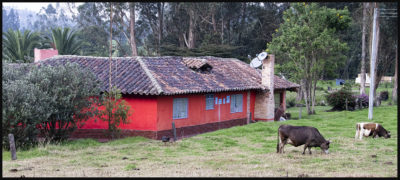
The main house.
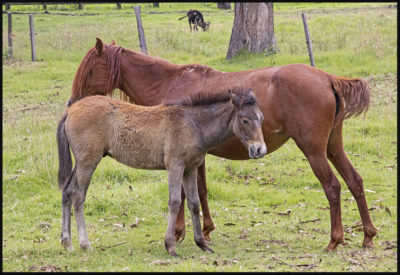
Our neighbors.

The neighbor’s place. It’s chilly at night in the mountains.
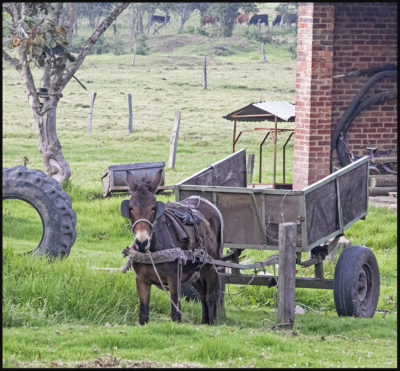
Hitched up with nowhere to go.
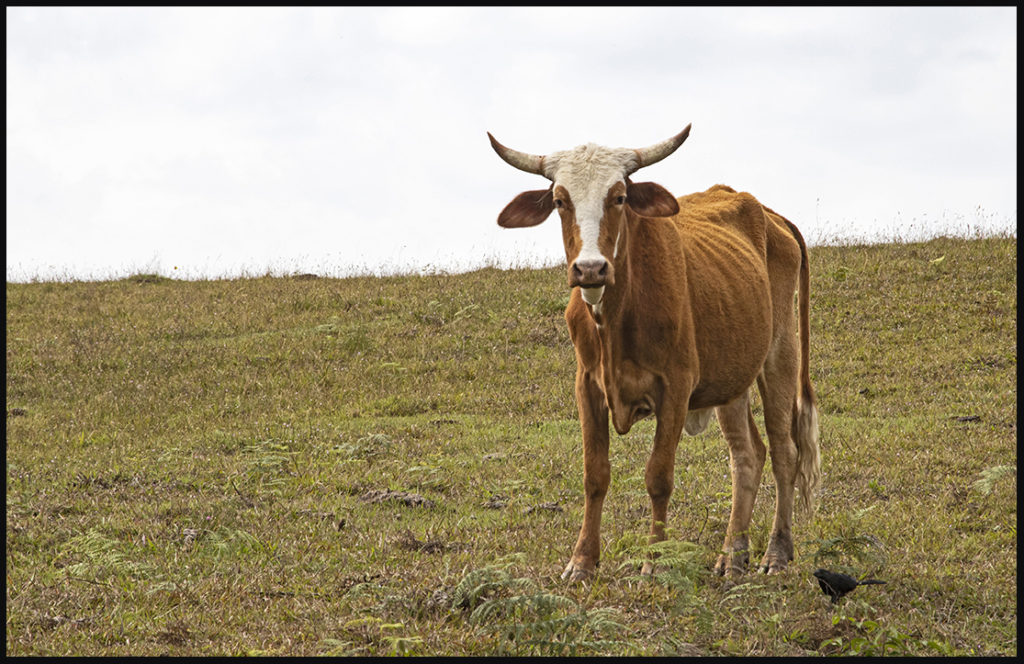
Cow with attendant Ani.
Spent the next two days exploring the nearby historic village of Villa de Leyva. Founded in 1572 mainly as a cool mountain refuge for military brass, clergy and Spanish nobility; it’s now frozen in time as a national monument. Tourists, mainly from Bogotá, flock here on weekends and holidays. Fortunately, during the week it’s a sleepy little slice of yesteryear.
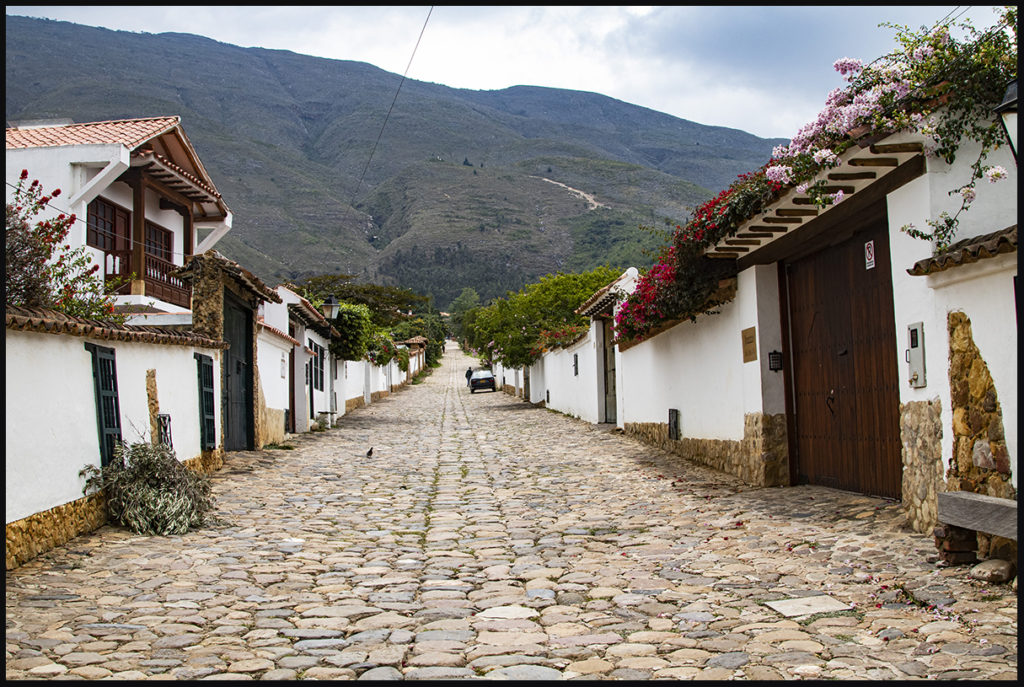
The cobblestone streets are nearly deserted during the week. A pigeon strolls with impunity.

Old walls next to new walls. Repairs are constant on buildings as old as these.
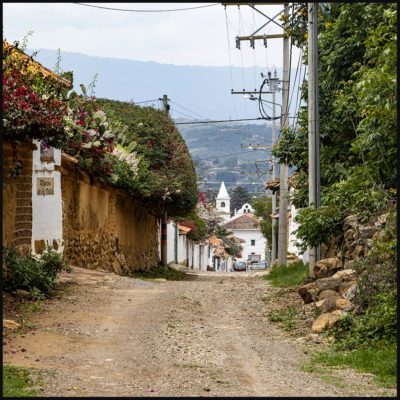
Streets on the edge of the village aren’t paved.

Rock wall with vines.
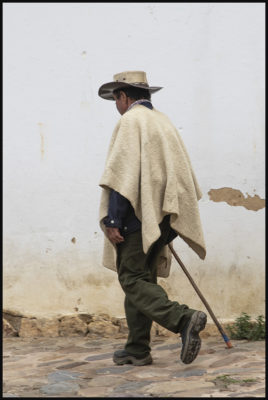
Wool serapes are popular in the cool mountains.

Weathered door.
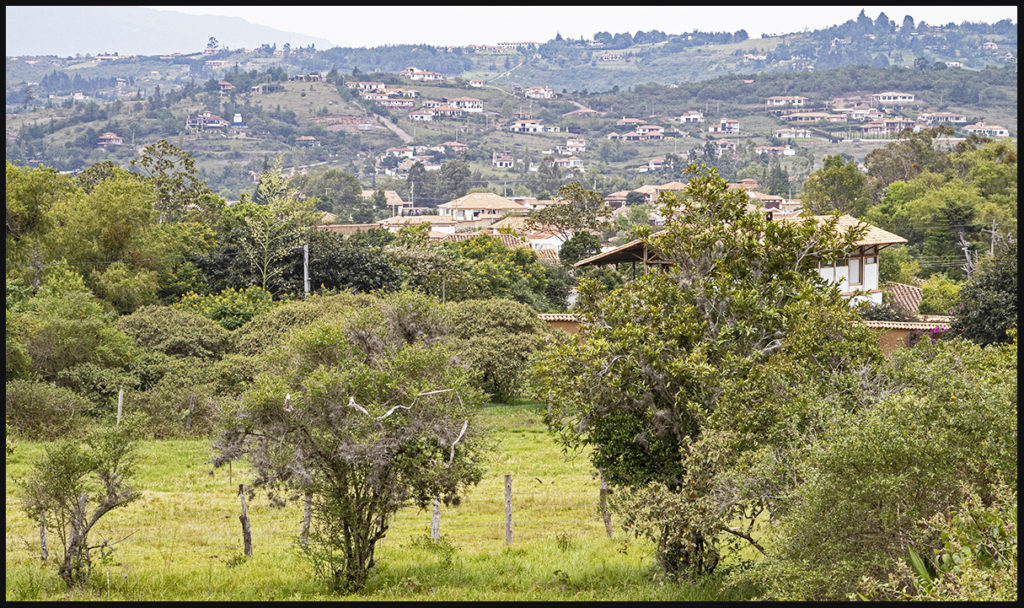
Surrounding properties in the suburbs have similar architecture.
The Plaza Major in the town’s center, (probably the largest in S. America) is over 100 yards on each side, with a small original fountain the only object in the huge cobblestone expanse. The fountain served as the city’s water source for nearly 400 years. It’s surrounded by fantastic colonial buildings and an obligatory parish church. Every town church we saw was in the midst of repairs; this one was no exception.
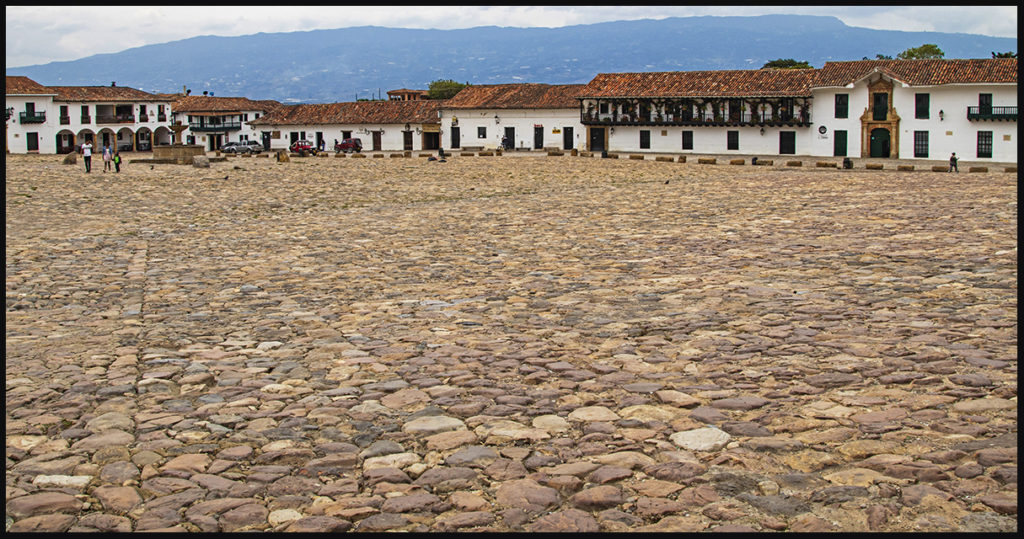
The plaza expanse.
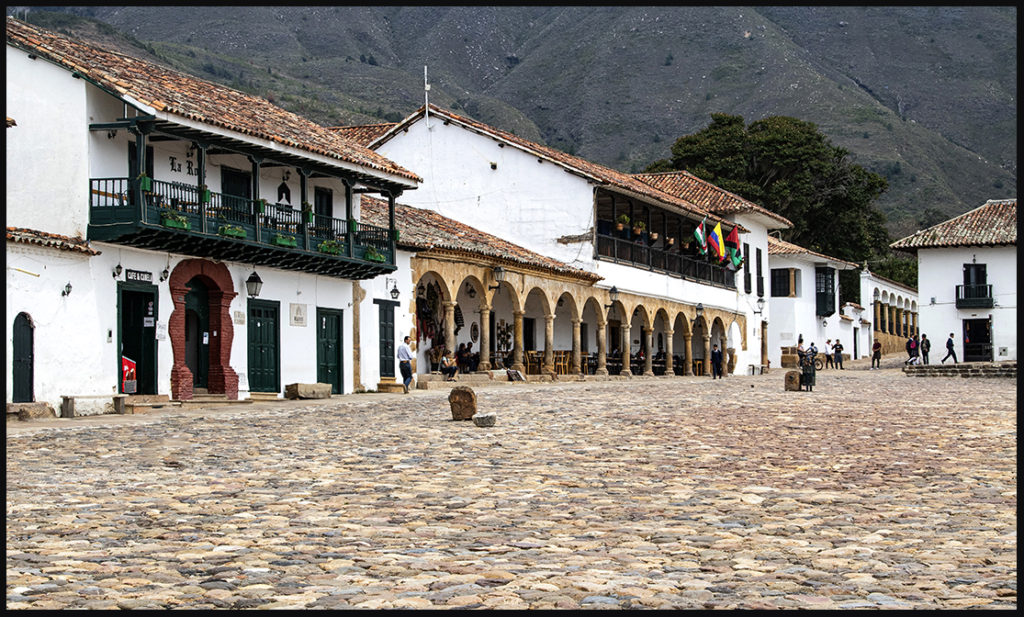
An old arcade on one side.

Parish church behind the ancient town fountain.
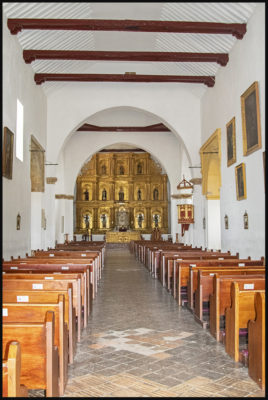
Inside the church.
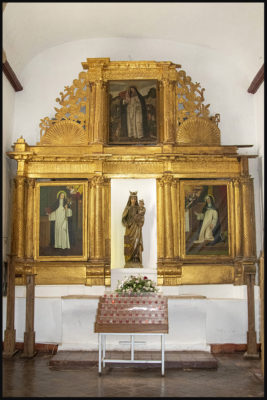
One of the side nooks.
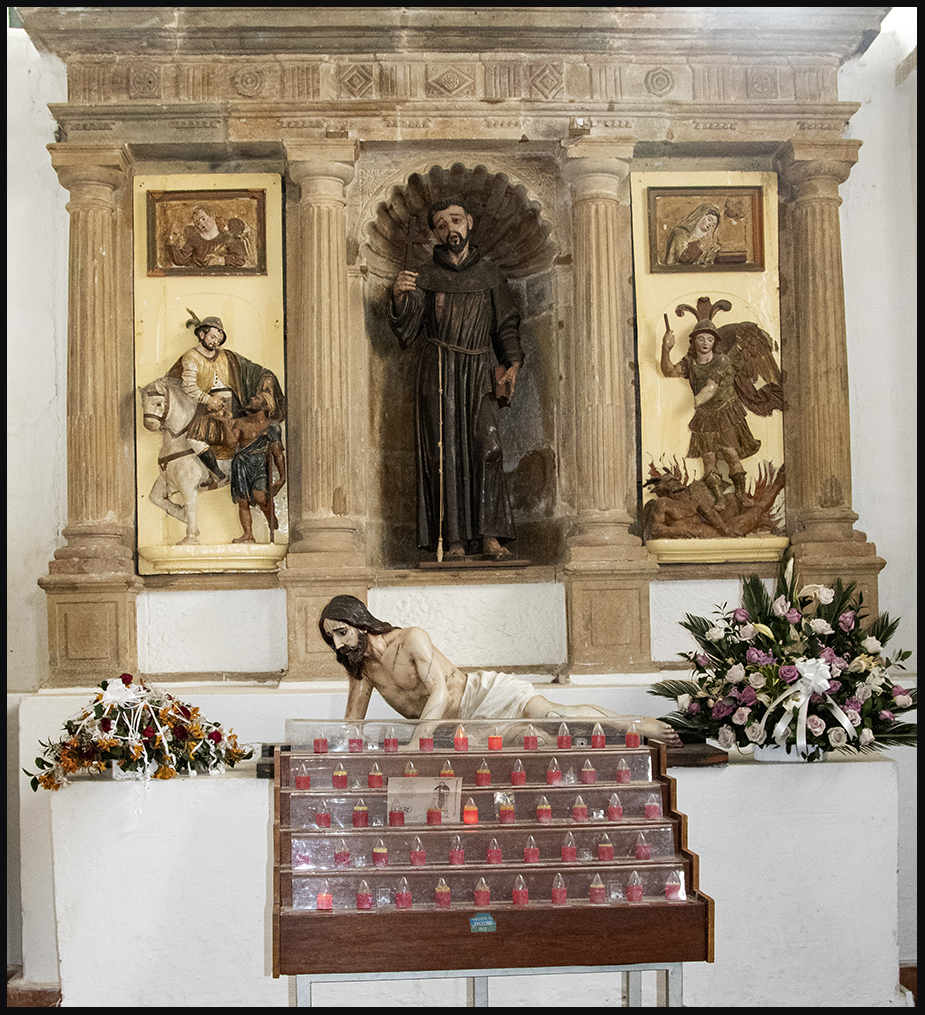
As in most Spanish colonial towns, life goes on behind thick walls. The street view presents an almost fortress-like appearance. Unlike our older towns with friendly porches facing the street to promote neighborly conversations, Spanish architecture has more of the seizure mentality. Interior courtyards are gorgeous with all family life focused there. 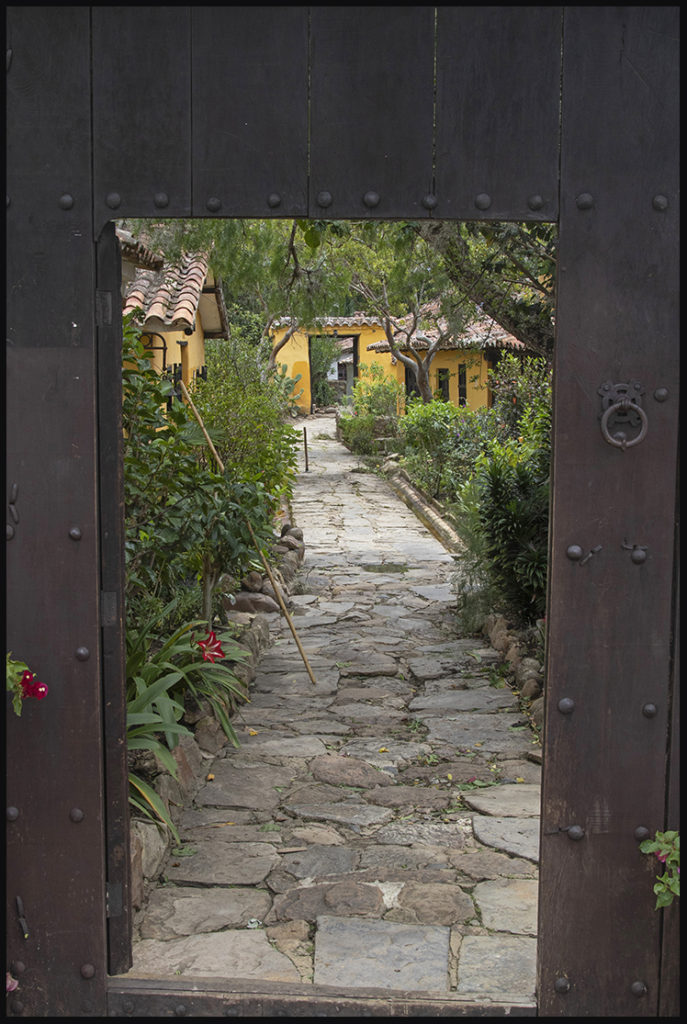

Empty streets give no clue to what goes on inside the walls.
Even the entrance gates are formidable with small mail slots, door knockers like those in Cartagena, and grated peepholes to see who is knocking.
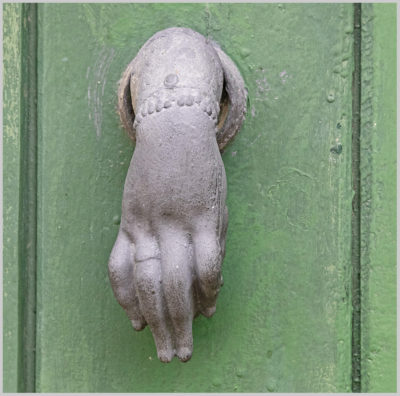
A creepy door knocker.
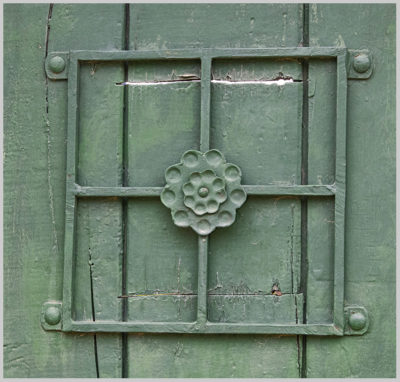
A grated peephole.
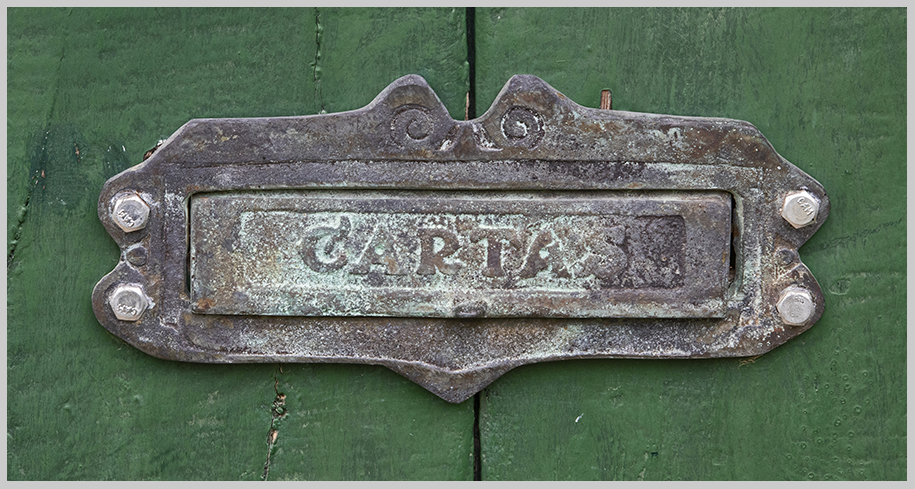
Mail slot.

Don Quixote exterior wall decor.
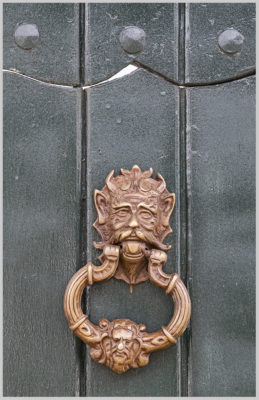
A more appealing door knocker.
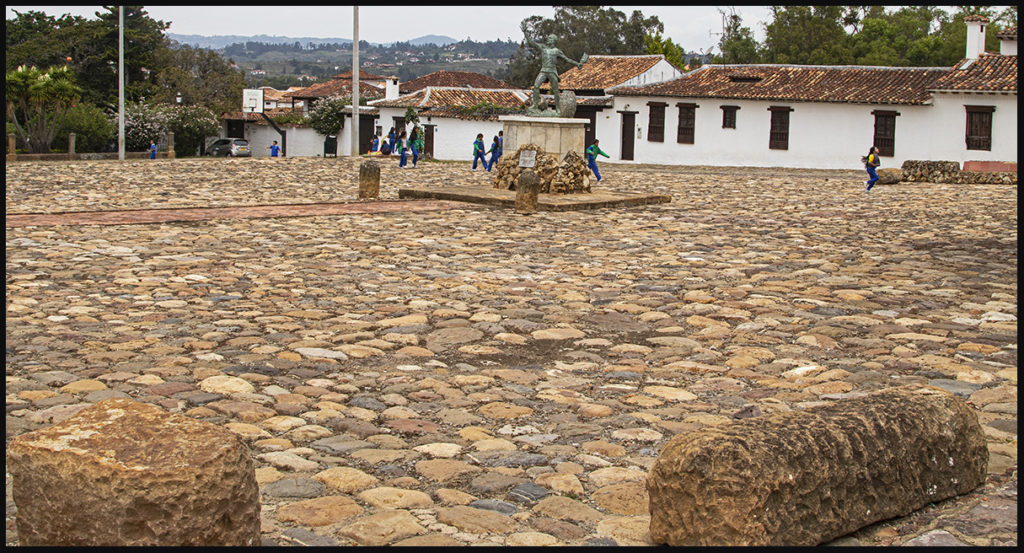
Secondary plaza honoring Villa de Leyva’s own, Antonio Ricuarte, 1786-1814, famous for joining the fight for Venezuela’s independence from Spain. His suicide at the battle of San Mateo (exploding the arsenal and himself at a contested manor) helped Simon Bolivar regain control of the area and eventually win the war.

Antonio Ricuarte in bronze.
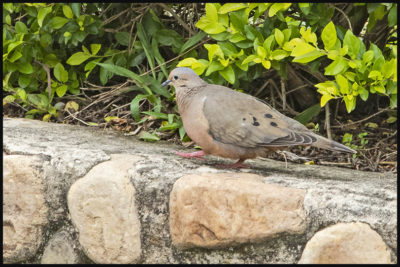
Eared dove. Can’t say much for finding interesting wildlife in the cities.

School children readying for a race.
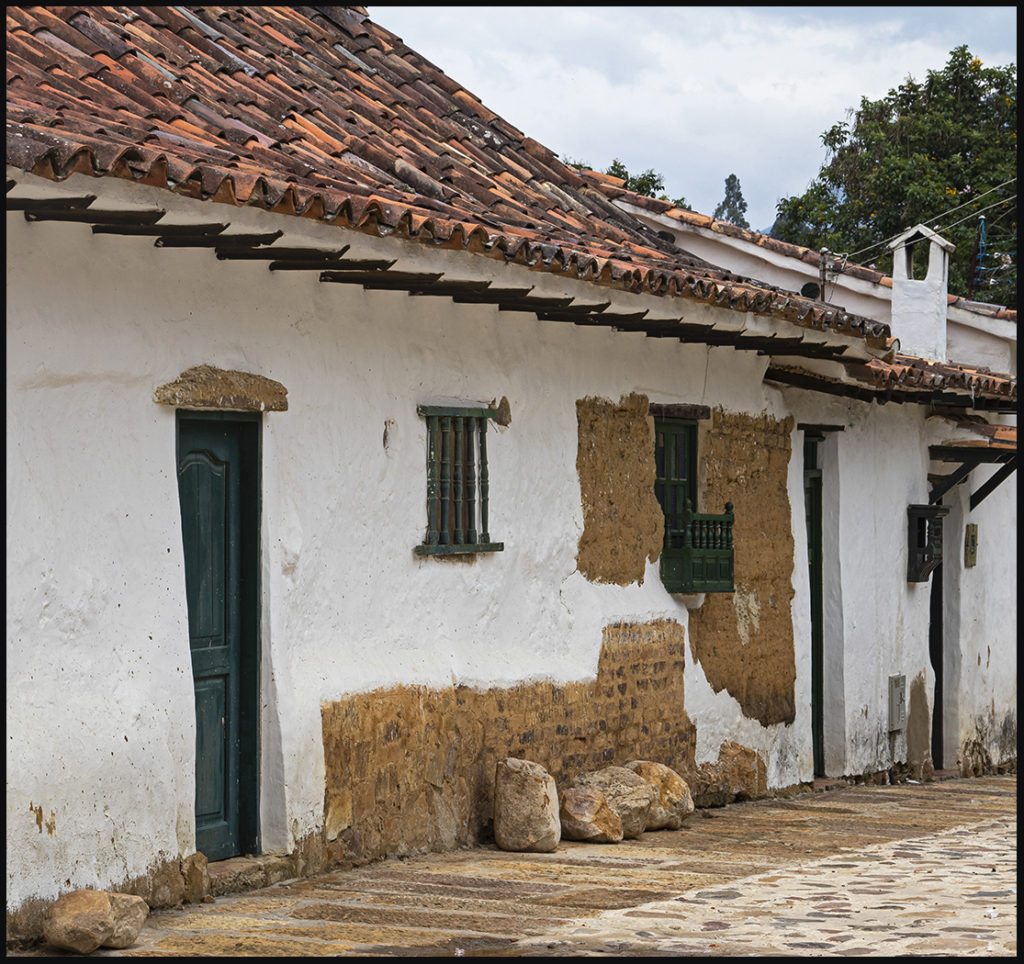
Note how the wall thickens towards the bottom.
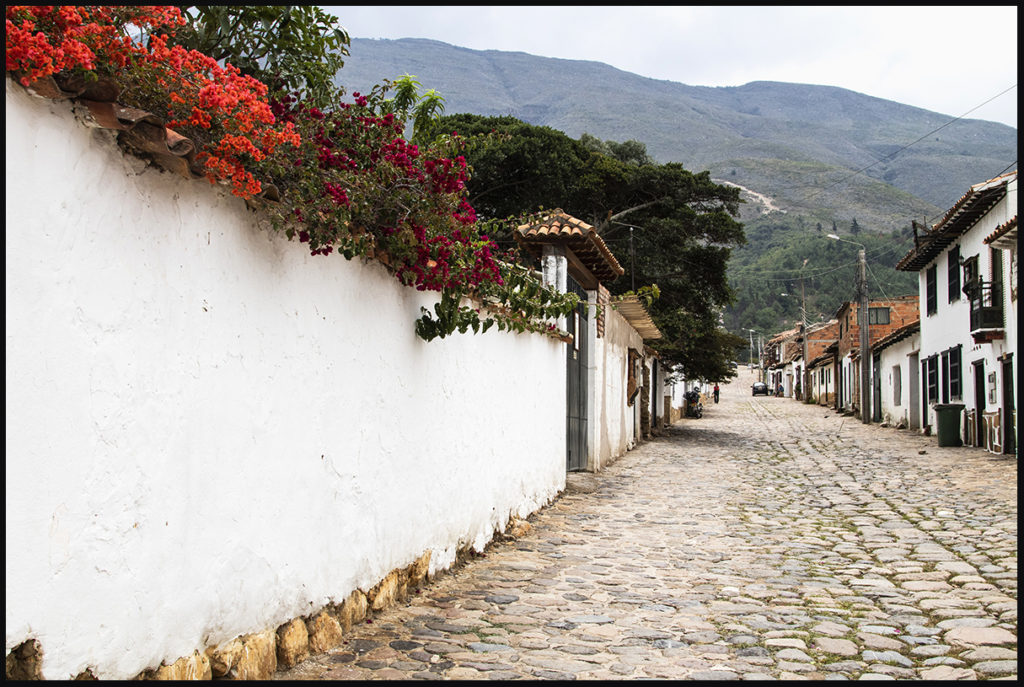
One more shot of the whitewashed walls facing the old cobblestones before we leave Villa de Leyva.
Driving from Villa de Leyva over the mountains was scenic, but with the usual horrible truck traffic. Unfortunately the high Palermo (tundra like area) was fogged in, windy and cold, so no great views. Seems the wet season arrived a month early in 2019. Descending from the frigid heights we stopped at a reasonable hour at the tiny town of Pajarito (translates as small bird). Found an $8 guest house with a darling proprietress, Daisy, who insisted on cooking our favorite food for us, pollo guisado. It’s sort of a chicken stew. She tried to charge us the princely sum of $4 each, but we insisted on $7 each. She was thrilled. We looked at the guest book when we signed in and the previous guest came in December. It’s now mid-March. Not a big tourist town obviously, but pleasant, with wi-fi in the town square and dogs lazing about.

Pajarito after a rain.
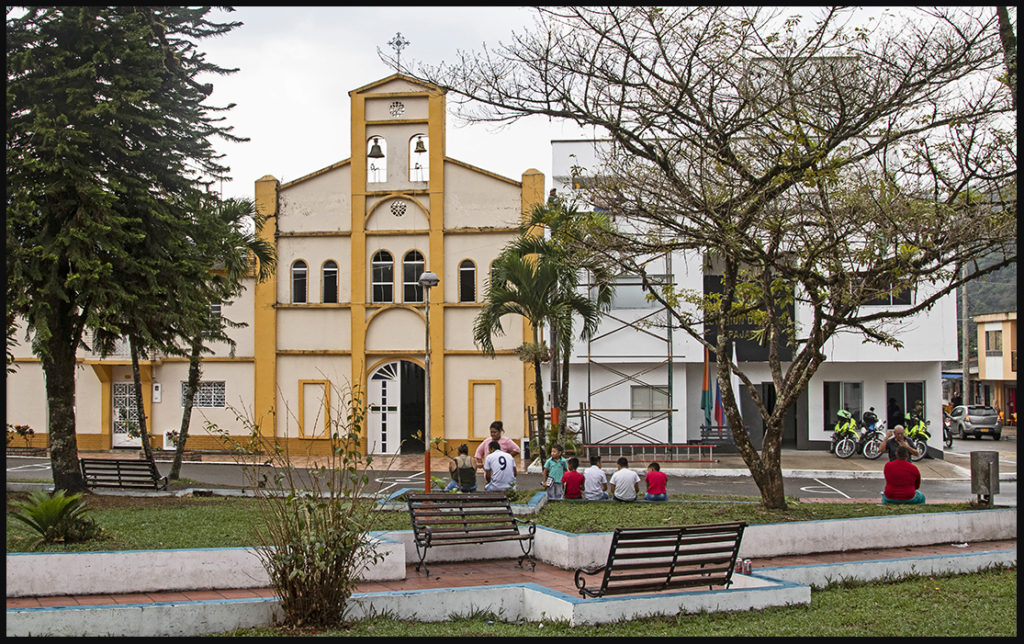
Town square with police station next to the church.
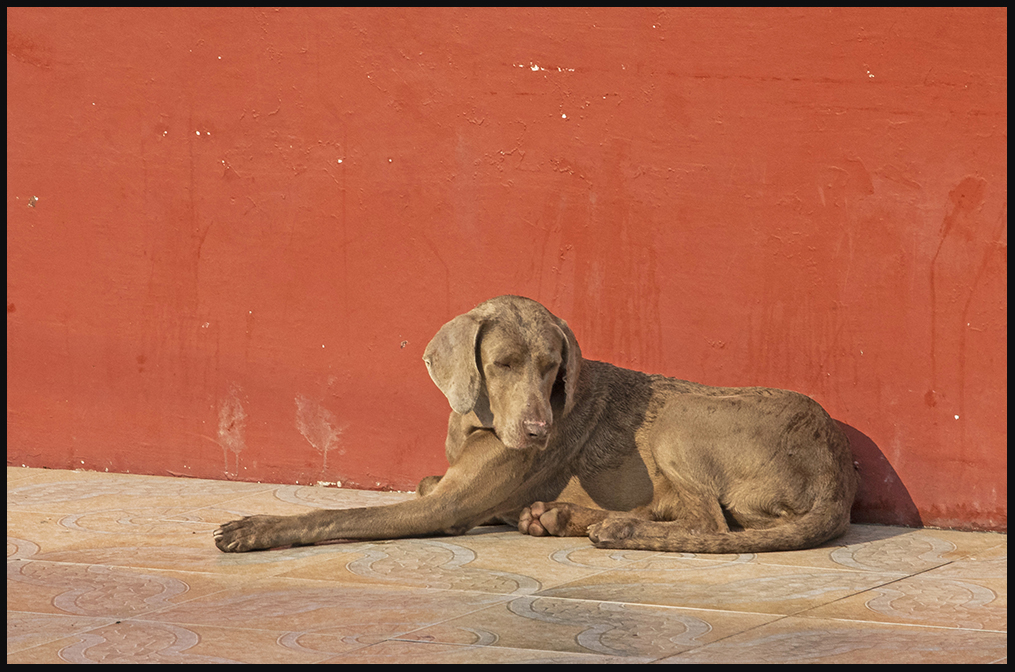
Will leave you with a lazy dog until the next installment.
